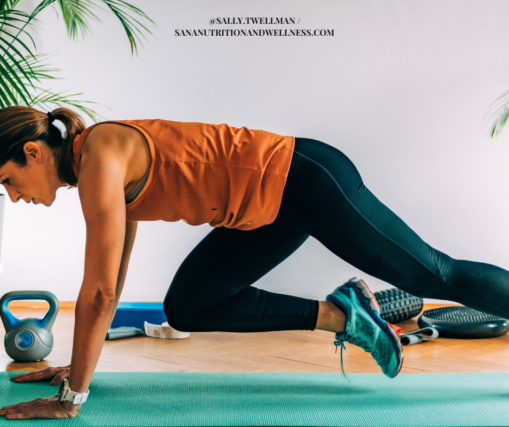This article contains affiliate links. Rest assured, I stand behind all the products recommended. These links support the creation of valuable content at no extra cost to you. As an Amazon Associate, I earn from qualifying purchases. Thank you for your support.
Inflammation is a natural response by the body to injury or infection. Still, when it becomes chronic, it can lead to a host of health issues, including autoimmune conditions. Chronic inflammation is linked to arthritis, cardiovascular disease, and diabetes. It is also the underlying culprit behind autoimmune diseases.
Diet and lifestyle play a huge part in healing and reducing inflammation. Incorporating regular exercise into your routine can be a powerful tool in combating inflammation and promoting overall health and well-being.

5 Ways Exercise Reduces Inflammation:
- Reduces Inflammatory Markers: Exercise has been shown to decrease levels of inflammatory markers in the body, such as C-reactive protein (CRP) and interleukin-6 (IL-6). These markers are associated with chronic inflammation and are often elevated in individuals with autoimmune conditions. By engaging in regular physical activity, you can help lower these markers and reduce inflammation.
- Improves Circulation: Exercise promotes better circulation throughout the body, which helps deliver oxygen and nutrients to tissues while removing waste products. Improved circulation can aid in reducing inflammation by supporting the body’s natural healing processes and enhancing immune function.
- Promotes a Healthy Weight: Excess weight and obesity are linked to increased inflammation in the body. Exercise plays a crucial role in weight management by helping to burn calories and build lean muscle mass. By maintaining a healthy weight through regular exercise, you can reduce the burden on your body and lower inflammation levels.
- Stimulates the Release of Endorphins: Exercise triggers the release of endorphins, which are neurotransmitters that promote feelings of happiness and well-being. These “feel-good” chemicals improve mood and have anti-inflammatory effects on the body. Incorporating exercise into your routine can boost your mood and reduce inflammation simultaneously.
- Supports Stress Management: Chronic stress significantly contributes to inflammation in the body. Exercise is a powerful stress reliever, helping to reduce levels of stress hormones such as cortisol. By engaging in regular physical activity, you can better manage stress levels, reduce inflammation, and promote overall health.

5 Easy Ways to Add Exercise To Your Life
Incorporating exercise into your daily life doesn’t have to be complicated or time-consuming. Here are some easy ways to get moving and reap the benefits of exercise for inflammation:
- Walking: Aim for at least 30 minutes of brisk walking each day. You can break it up into smaller sessions throughout the day if needed. I encourage my clients to set a step goal for the day. A popular goal of 10K steps in a day is great! There is nothing magical about the number 10K; it’s just a good way to gauge how active you have been throughout the day. And if you have gotten 10K steps, you know you have walked ~ 5 miles or 8km, which is pretty awesome! ! I love using movement trackers like the Apple Watch, Fitbit, or Garman Watch.
- Try home workouts: Plenty of free workout videos are available online that you can do from the comfort of your own home. Choose activities you enjoy, such as yoga, Pilates, or bodyweight exercises. I love using these bands for gentle resistance.
- Join group fitness classes: Many community centers and gyms offer fitness classes catering to various fitness levels and interests. Exercising with others can provide motivation and support.
- Incorporate physical activity into your routine: Look for opportunities to be active throughout the day, such as taking the stairs instead of the elevator, gardening, or playing with your pets.
- Find activities you enjoy: The key to sticking with an exercise routine is to find activities that you enjoy and that fit into your lifestyle. Whether dancing, cycling, swimming, or hiking, choose activities that bring you joy and make it easier to stay consistent.
By making exercise a priority and finding ways to incorporate movement into your daily routine, you can help reduce inflammation, improve your overall health, and enhance your quality of life.
Start small, set achievable goals, and gradually increase the intensity and duration of your workouts as you build strength and stamina. Remember, even small changes can make a big difference in managing inflammation and promoting well-being.




